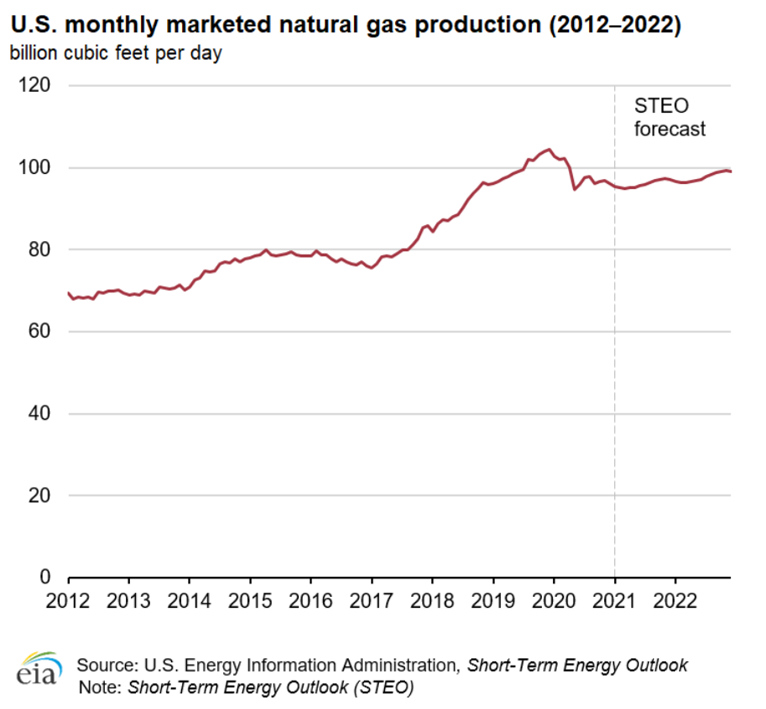Fossil fuels production in the U.S. will peak in 2022, but will likely remain under 2019 levels, when it reached a high record of 81,3 quadrillion British thermal units. According to the Energy Information Administration, all of 2021 will be a challenging year for fossil fuels, and its production will remain flat.
In 2021, a peak in coal use will offset the decline in natural gas production, balancing the fossil fuels mix for 2021; it won’t be until next year when crude oil, coal, dry natural gas and derivatives will increase production.
“EIA’s surveys measure fossil fuels production in physical units, such as cubic feet for natural gas, barrels for crude oil, and short tons for coal. In this article, energy production is expressed in heat content units to allow comparisons across fuel types,” EIA’s report explains.
And reports, that, in 2020, dry natural gas accounted for the largest portion of all U.S. fossil fuel production, with 46% of the mix; then crude oil, with 31%, coal, 14%; and natural gas plant liquids, 9%.
Nevertheless, it was from natural gas that the U.S produced more power from, than any other source. In 2020, the U.S. powered 24 quadrillion Btu’s from crude oil, then 11 quadrillion Btu’s from coal, and outstanding 35 quadrillion Btu’s from natural gas.
Recommended for you: DOE to sell oil from the Strategic Petroleum Reserve in 2021
Fossil fuels will rebound in 2022
This trend has only seen since 2010, when coal ceased to be the leading source for power. In 2020, coal production fell as much as 24%. And, as we have reported previously, the electricity sector used 30% less coal for electricity generation, during the first six months of 2020, than 2019’s same period.
Nevertheless, the International Energy Agency, and the EIA coincide in their forecasts for a moderate peak of coal production in 2021, and 2022. EIA estimates that coal production will rebound 12% in 2021, and further 4% in 2022.


An increase in natural gas prices, that also reduces its consumption for electricity generation is the main factor for coal’s increase; “which will result in an increased share for coal—and to a lesser extent, an increased share for renewables such as wind and solar—in the electricity generation mix,” EIA underlines.
Finally, natural gas liquid plants production in 2021 is expected to increase by a 2% this year, and further 7% in 2022, mostly attributed to ethane production growth.

